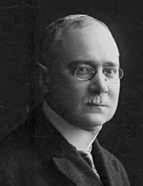

It was through direct contact with documents , and the organisation of historical materials (especially those from the Inquisition’s registry offices), many of which arrived at the Torre do Tombo Archives in successive waves, that Baião developed a refined methodological, critical and archival spirit that was indispensable for his research. As the most senior official in charge of Portugal ’ s central historical archive, with in-depth knowledge of its institutional and documentary history and as a member of the Academia das Ciências, he continued his previous efforts to bring out unpublished material and to interpret and enhance the existing bodies of documents in the Torre do Tombo. These endeavours had already been made by custodians such as the Viscount of Santarém and Cardinal Saraiva, historians such as Francisco Varnhagen and Alexandre Herculano , and diplomats such as João Pedro Ribeiro. Proof of this can be found in the pages he wrote with Pedro de Azevedo in a text about the archive, whose subtitle ‘Its history, constituent bodies and organisation’ does not mention his personal eagerness to discover an immense mass of monuments, of which he was a faithful custodian and enthusiastic chronicler.
In addition, he made a name for himself with his studies on the Inquisition and the profiles of several of his predecessors at the head of the Torre do Tombo, specialising in what he called the Academy's infancy (especially the work of João Pedro Ribeiro) and the historical work of Alexandre Herculano. For this purpose, he used the collections of the Torre do Tombo and the Academia das Ciências, as well as Herculano ’ s personal documents. Once again, he points to these eighteenth - and nineteenth-century figures, crucial in the emergence of a historical science greatly enriched by palaeography and diplomacy , as living examples for the twentieth century.
In the midst of an extensive bibliography, including a juvenile book of poetry (1896) and the first historical work dedicated to the illuminator Duarte Fernandes, in Anselmo Braamcamp Freire ’ s Arquivo Histórico Português [Portuguese Historical Archive] (1903), four types of work can be listed.
This work is financed by national funds through FCT - Foundation for Science and Technology, I.P, in the scope of the projects UIDB/04311/2020 and UIDP/04311/2020.
